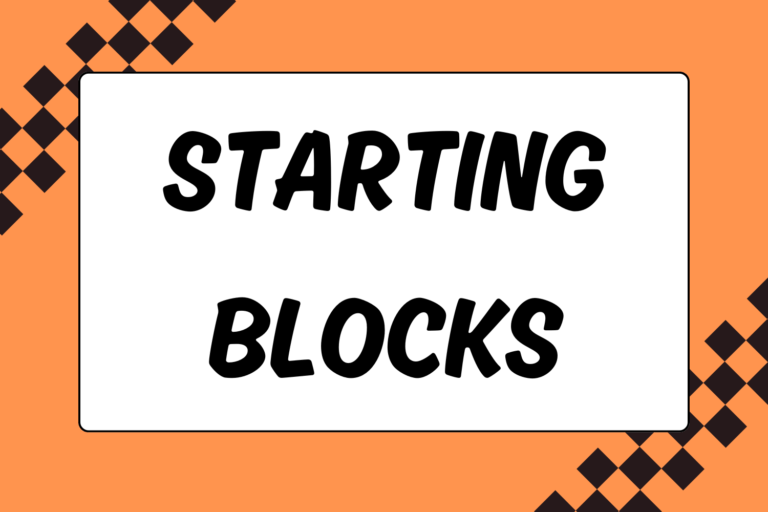The pole vault is the only non-throwing track event to use an implement. Whereas throwing implements are standardized, the pole vault pole offers a choice of pole stiffness and length. This guide walks you through pole classifications and how to choose the pole that will let you safely vault the highest.
Pole Classifications
There are two main classifications for pole vault poles. They are:
- Bodyweight rating
- Pole length
Differences in these two pole classifications create the variety that gives you an array of pole choices.
Bodyweight Rating
Bodyweight rating is both a rating of stiffness and a safety guideline. Use a pole that’s rated at least as high as your weight in pounds. As your skill improves, you will want to use a pole with a heavier rating than your own body weight. A stiffer pole returns more energy and so offers a higher potential vault. The tradeoff, however, is that it is harder to control and might hinder the technical aspects of your vaulting.
Pole Length
Pole length is measured in feet. As your skill improves, you will want to select a longer pole. The length of the pole you need is directly related to how high you can vault. If your vaulting technique is good, you should be able to vault at least 15 inches above your highest hand-hold. As you are able to vault higher, you will need a higher pole. However, moving to a higher pole will not necessarily allow you to vault higher. Moving up prematurely might hurt your vaulting. More detailed pole selection advice is covered below.
Use the Designated Grip Area
Pole vault poles are carefully engineered to be used with a designated grip area. However, vaulters are sometimes tempted to grip outside of this area. Gripping too high is against the rules, but gripping too low can be a problem as well. Not only will it hinder your ability to accurately select an appropriate pole, but it is also dangerous.
Pole vault poles are far from simple, uniform cylinders. Most poles are tapered to be both thicker and stiffer in the middle. Lowering your grip too much shifts the force of vaulting onto a weaker part of the pole, which increases both the bend and the risk of a snapped pole. The bottom line is: If you aren’t holding a pole within the designated grip area, you shouldn’t be using that pole.
Pole Selection Criteria
Many factors influence which pole you should select. Among these factors are approach speed, technical ability, and vault height. Two simple, easily observable factors serve to assess whether or not to change poles. These are:
- Penetration: How far back in the pit you are landing
- Pole bend: How much the pole is bending.
If you are clearing the bar with the standards all the way back, this is good. But if you are landing close to the very back of the pit, this constitutes an excessive amount of penetration.
Beginning vaulters might not bend the pole at all, which is fine. More often than not, if a beginning vaulter is bending the pole, it is due to improper technique. Extreme pole bend can be dangerous, and puts the vaulter at risk of snapping a pole.
Choosing Your Pole
Below are some scenarios based on penetration and pole bend with corresponding recommendations for the appropriate adjustments to make:
Poor Penetration, Large Pole Bend
If you’re not penetrating deep into the pit but are bending the pole heavily, you should lower your grip. Make adjustments only in small increments, doing enough trials after each adjustment determine whether the new grip height is appropriate. If you cannot lower your grip within the designated grip area, you will need to move to a shorter pole.
Poor Penetration, Small Pole Bend
If you’re not penetrating deep into the pit or bending the pole very much, try vaulting on a pole with a lower bodyweight rating. Make sure that the new pole is still rated at or above your own weight.
Excessive Penetration, Large Pole Bend
If you are penetrating deep into the back of the pit with a large pole bend, select a pole with a heavier bodyweight rating.
Excessive Penetration, Small Pole Bend
If you are penetrating way into the back of the pit with a small pole bend, try gripping the pole higher. If you can’t grip higher within the designated grip area, you will need to select a longer pole.
Landing Off-Center in the Pit
If you are consistently landing to the right or left side of the pit, it means you aren’t controlling your vaulting at your current grip height. Try lowering the grip. If you can’t lower your grip and stay within the designated grip area, you’ll have to move to a shorter pole.
Save Moving up for Last
A common mistake many vaulters and coaches make is to move up to a longer pole too soon. If your vaulting is indicating that you need to make a pole change, the first change should be selecting a stiffer pole. If you can vault on a pole rated 30 pounds higher than your bodyweight with the standards set all the way back, then you can look to move to a pole one foot longer with a bodyweight rating 10-15 pounds higher.
Technique is King
Technique is the most important determinant of your vaulting, so it should always be your primary focus. If you’re having problems clearing a height, landing deep or shallow in the pit, or bending the pole too much, examine your technique before your pole selection.
Technique — not pole selection — will almost always be what limits the height you’re able to clear. Remember: It’s possible to jump several feet higher than the length of your pole. If you’re not clearing higher than your pole, technique should be the first place to seek improvement.





